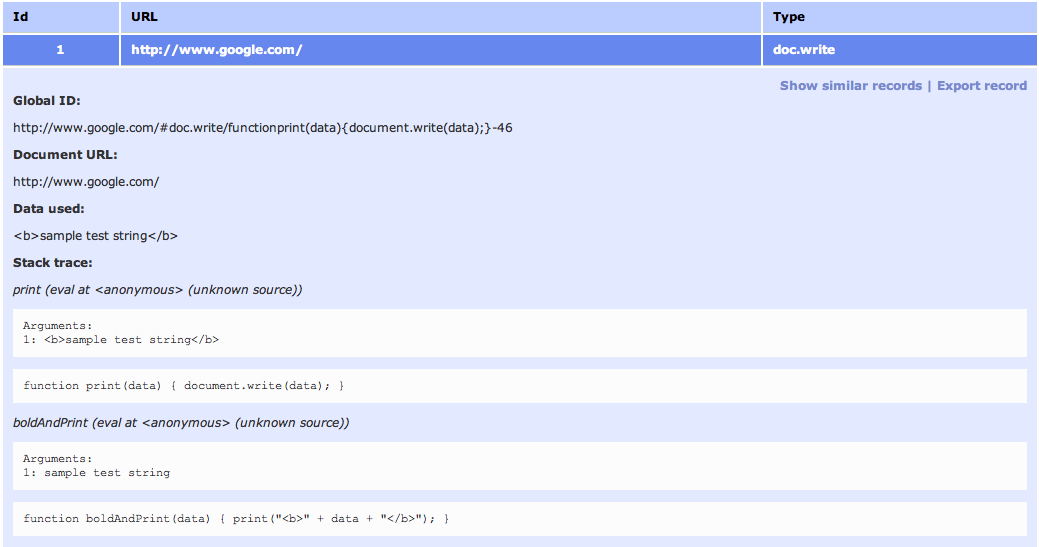Introducing DOM Snitch, our passive in-the-browser reconnaissance tool
June 21st, 2011 | Published in Google Testing
By Radoslav Vasilev from Google Zurich
Every day modern web applications are becoming increasingly sophisticated, and as their complexity grows so does their attack surface. Previously we introduced open source tools such as Skipfish and Ratproxy to assist developers in understanding and securing these applications.
As existing tools focus mostly on testing server-side code, today we are happy to introduce DOM Snitch — an experimental* Chrome extension that enables developers and testers to identify insecure practices commonly found in client-side code. To do this, we have adopted several approaches to intercepting JavaScript calls to key and potentially dangerous browser infrastructure such as document.write or HTMLElement.innerHTML (among others). Once a JavaScript call has been intercepted, DOM Snitch records the document URL and a complete stack trace that will help assess if the intercepted call can lead to cross-site scripting, mixed content, insecure modifications to the same-origin policy for DOM access, or other client-side issues.

Here are the benefits of DOM Snitch:
DOM Snitch is intended for use by developers, testers, and security researchers alike. Click here to download DOM Snitch. To read the documentation, please visit this page.
*Developers and testers should be aware that DOM Snitch is currently experimental. We do not guarantee that it will work flawlessly for all web applications. More details on known issues can be found here or in the project’s issues tracker.
Every day modern web applications are becoming increasingly sophisticated, and as their complexity grows so does their attack surface. Previously we introduced open source tools such as Skipfish and Ratproxy to assist developers in understanding and securing these applications.
As existing tools focus mostly on testing server-side code, today we are happy to introduce DOM Snitch — an experimental* Chrome extension that enables developers and testers to identify insecure practices commonly found in client-side code. To do this, we have adopted several approaches to intercepting JavaScript calls to key and potentially dangerous browser infrastructure such as document.write or HTMLElement.innerHTML (among others). Once a JavaScript call has been intercepted, DOM Snitch records the document URL and a complete stack trace that will help assess if the intercepted call can lead to cross-site scripting, mixed content, insecure modifications to the same-origin policy for DOM access, or other client-side issues.
Here are the benefits of DOM Snitch:
- Real-time: Developers can observe DOM modifications as they happen inside the browser without the need to step through JavaScript code with a debugger or pause the execution of their application.
- Easy to use: With built-in security heuristics and nested views, both advanced and less experienced developers and testers can quickly spot areas of the application being tested that need more attention.
- Easier collaboration: Enables developers to easily export and share captured DOM modifications while troubleshooting an issue with their peers.
DOM Snitch is intended for use by developers, testers, and security researchers alike. Click here to download DOM Snitch. To read the documentation, please visit this page.
*Developers and testers should be aware that DOM Snitch is currently experimental. We do not guarantee that it will work flawlessly for all web applications. More details on known issues can be found here or in the project’s issues tracker.